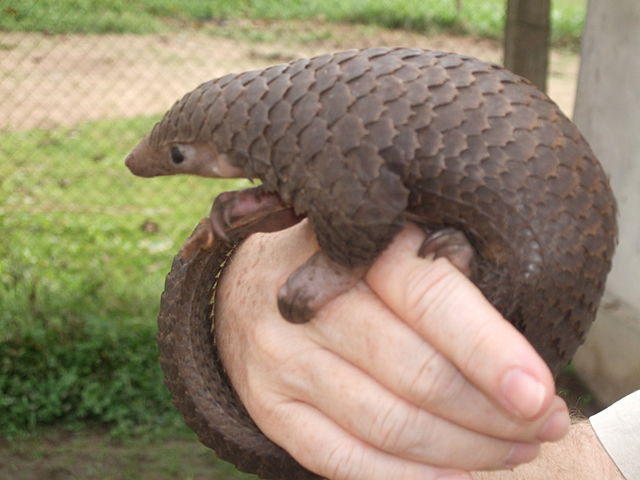
The recent outbreak of a deadly coronavirus has been tentatively linked to pangolins, an endangered animal that looks like a scaly anteater. A new study has found that the strain of coronavirus found in local pangolins is 99 percent identical to the latest version spreading among humans. The South China Agricultural University conducted the research.
Pangolins are a delicacy in the Chinese culture. Its scales are prized in traditional Chinese medicine, even though they are just made of keratin, like fingernails. The emergence of the virus is believed to be tied to the Huanan Seafood Wholesale Market in Wuhan, China, where wild-animal meat was sold. To conclusively identify the culprit, researchers would need to test each species that was on sale at the market.
Nearly all strains of coronavirus contagious to humans originated in wildlife. Other researchers previously concluded that bats were the likely source the outbreak. A genetic analysis showed that the strain of the virus currently spreading among humans was 96 percent identical to that found in bats. However, studies showed that the bat-borne virus lacked the necessary hardware to latch onto human cell receptors, indicating that another animal could be the missing link between bats and humans.
Identifying the carrier animal for the novel coronavirus could prove vital in preventing future flare-ups. There could be a population of animals capable of sparking new outbreaks. The current outbreak has sickened almost 40,000 people and killed more than 800, mostly in China. The World Health Organization has declared the outbreak a public health emergency and said that it could become a global pandemic if not contained.
Scientists have identified about 400 emerging diseases since 1940, of which more than 60 percent have been zoonotic, jumping from animals to humans. Some these include swine flus, avian flus, hantavirus from mice, MERS from camels, and HIV from chimpanzees. The modern world has made zoonotic epidemics more likely to occur as more people are coming into contact with more animals in more places. Once a virus jumps into humans, population density can become a major factor in whether a small number of illnesses turns into an epidemic.
